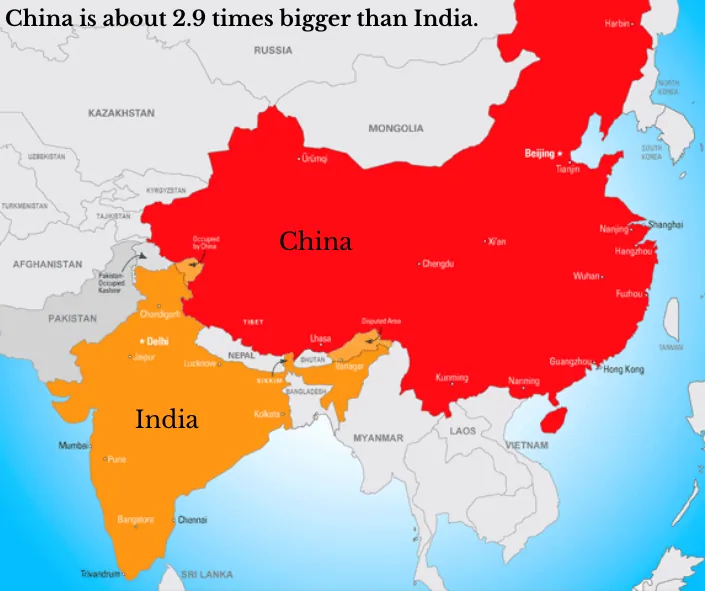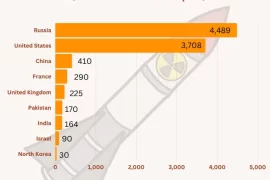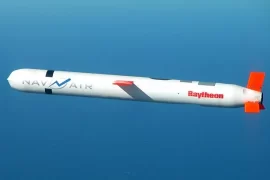As two of the world’s most populous countries and fastest-growing economies, India and China have emerged as major global players. With their geopolitical importance, both countries have invested heavily in their military capabilities in recent years, positioning themselves as regional and global powers. As tensions between the two nations continue to simmer, it is essential to compare and evaluate the military strength of India and China. By comparing the military capabilities of India and China, we can better understand the potential implications of their rivalry for regional stability and global security.
In the US News 2023 rankings, China secured the second spot as the world’s most powerful country, while India stood at the 14th position on the list.
Table: A comparison of the military strengths of India and China
| Indicator | China | India |
| Global Firepower Index Ranking (2023) | 3 | 4 |
| Available Manpower | 761,691,468 ( Rank 1) | 653,129, 600 (Rank 2) |
| Fit-for-Service Manpower | 624,869,113 (Rank 1) | 515,555,492 (Rank 2) |
| Reaching military age annually | 19,747,557 (Rank 2) | 23,623,837 (Rank 1) |
| Active Personnel ( Army) | 2,035,000 | 1,025,000 |
| Active Personnel ( Navy) | 2,60,000 | 65,000 |
| Active Personnel ( Air Force) | 3,95,000 | 1,40,000 |
| Defense Budget | $230 billion (Rank 2) | $54.2 billion (Rank 4) |
| Number of Aircraft (Air Power) | 3,284 (Rank 3) | 2,210 (Rank 4) |
| Fighter Aircraft | 1,199 ( Rank 2) | 577 (Rank 4) |
| Aerial Tanker | 6 | 4 |
| Helicopters | 913 | 807 |
| Airports | 507 | 346 |
| Tank Strength ( Land Power) | 4,950 (Rank 4) | 4,614 (Rank 6) |
| Fleet Strength ( Naval Power) | 730 (Rank 1) | 295 ( Rank 7) |
| Aircraft Carriers | 3 (China’s largest warship CNS Fujian) | 2 |
| Helicopter Carriers | 3 | 0 |
| Submarines | 78 (Rank 1) | 18 (Rank 18) |
| Destroyers | 50 | 11 |
| Ports & Terminals | 22 | 13 |
| Share of global arms import | 4.6% | 11% |
Source of Information: CIA-The World Fact Book, Global Firepower, 2023, Wikipedia,
Military Modernization
While both countries have invested heavily in their defense sectors and have made significant strides in modernizing their armed forces, their approaches differ in many ways.
The vulnerability of India’s air assets became evident during a 2019 standoff over Kashmir when a Pakistani jet downed an outdated Indian MiG-21. India initiated a rapid overhaul of its air force, procuring advanced aircraft from France, Russia, and the United States. Moreover, India shifted its focus from heavy tanks. India ranks top in the list of the 10 largest arms importers in the world.
China’s President Xi Jinping has outlined an ambitious modernization plan for the People’s Liberation Army (PLA) with four key milestones. By 2020, the PLA aimed for mechanization and substantial progress in the integration of information and communications technology. The focus will be on army building and professionalization by 2027. By 2035, the goal is full modernization and intelligentization, integrating AI and autonomy. The ultimate aim is to have the ability to fight and win wars by the mid-21st century. These comprehensive reforms span all PLA service arms and prioritize joint operations based on modern and future warfare concepts, cementing China’s commitment to military prowess and global influence.
Ultimately, the balance of power between these two regional giants remains a critical issue with far-reaching implications. As such, ongoing monitoring and analysis of their military strengths and strategies will be essential in understanding the evolving security environment in the Asia-Pacific region and beyond.
Military Clash
Although India and China never engaged in a full-scale war, they had several fights at their border. The most prominent India-China border dispute was the 1962 Sino-Indian War. China emerged victorious in the military conflict, gaining control over Aksai Chin.
In 2020, a major military standoff occurred in the Ladakh region between Indian and Chinese troops. According to India’s foreign ministry, 20 Indian soldiers were killed in the action. The Chinese government admitted that they lost their 4 soldiers in the clash.
Combat Experience
China’s limited combat experience is a notable weakness. Its last significant conflict dates back to 1979 when it invaded Vietnam but withdrew after three weeks, suffering heavy casualties. In contrast, India had fought four wars since its 1962 clash with China, gaining valuable insights into high-altitude warfare.
Preparedness
In the harsh Himalayan environment, extreme altitude posed formidable challenges. Weapons malfunctioned, engines struggled to start, and helicopters had limited lift capacities. Soldiers grappled with oxygen deficiency and hypothermia risks.
India responds by enhancing cold-weather gear, acquiring air defense systems and drones, and conducting rigorous training. To bolster its high-altitude warfare capabilities, India established the Indo-Tibetan Border Police, comprising 89,000 specialized troops skilled in mountain warfare and guerrilla operations. India also maintains a constellation of 21 satellites, a significant portion dedicated to image and intelligence gathering. This, coupled with intelligence support from the United States, played a pivotal role in providing situational awareness in remote and mountainous Ladakh.
China enjoys a significant logistical advantage due to its high-speed rail links near the border. This infrastructure enables China to build metal roads and provide heated accommodations for its troops, mitigating the extreme winter temperatures. This logistical edge facilitated the efficient transport of critical supplies.
Comparing India and China’s military strengths: Summary
In conclusion, the Himalayas continue to be a theater of complex and evolving military dynamics. Both India and China have been addressing their weaknesses and preparing for potential conflicts. With no clear strategic victor between them, the prospect of a large-scale conflict in this region remains a prolonged and complex challenge, with the potential to draw neighboring countries into the fray and disrupt decades-old power balances.
Comparing India and China’s military strengths: FAQs
Q: Is China bigger than India in the area?
A: China is about 2.9 times bigger than India.
Q: Is India’s military stronger than China’s?
A: No. China’s military strength surpasses that of India, making it a more powerful nation in terms of military.
Q: Whose army is bigger China or India?
A: The Indian Army, with 1.25 million active personnel, is smaller than the Chinese Army, which has 2,035,000 active personnel.
Q: Is the Indian Air Force better than China?
A: No. The Global Firepower Index indicates that China holds the third position in terms of air power, with a fleet of 3,284 aircraft, whereas India ranks fourth with 2,210 aircraft.
Q: Is the Indian Navy stronger than China?
A: No. As per the Global Firepower Index, China holds the top position in terms of naval power, with an impressive fleet of 730, while India lags behind at seventh place with 295 fleets.









India was ranked 3rd strongest Air Force in the world ahead of China by the world Directory of Modern Millitary Aircraft.
The Armed forces of India is also miles ahead ,as man toman quality is concerned , Indians are miles ahead of China,
Yes Chinese Navy seem to be ahead of India only in terms of Logistics, but again in terms of Man to Man qualities are concerned Indian Navy hold edge over Chinese Navy.
Visible things are that India holds sway over China in Armed forces and Air Force.
In terms of Navy China Seem to have edge over India logistically, but as of ar as the matter of masculinity and Merrit are concerned India will beat China in all streams of the warfare